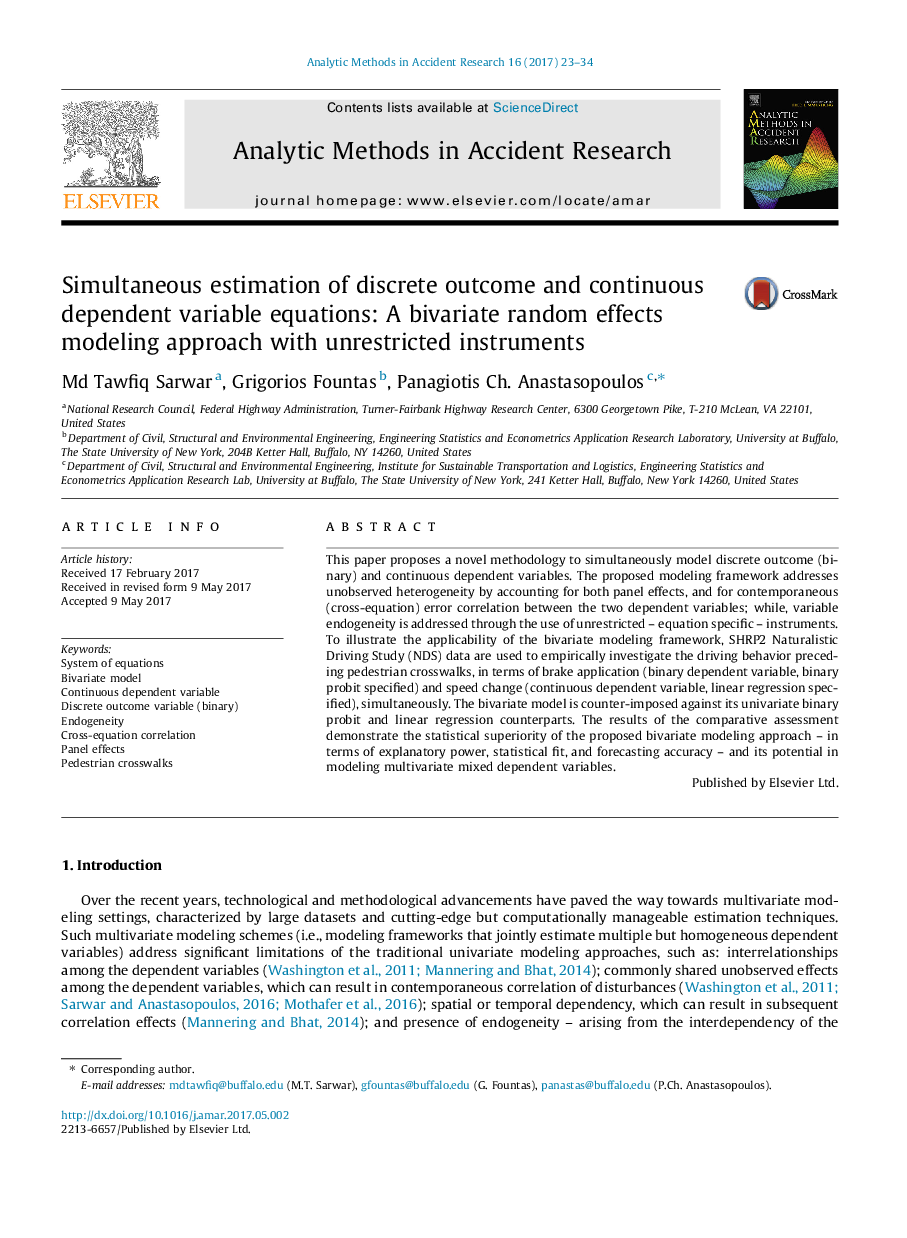| Article ID | Journal | Published Year | Pages | File Type |
|---|---|---|---|---|
| 5124655 | Analytic Methods in Accident Research | 2017 | 12 Pages |
â¢Discrete binary outcome and continuous dependent variables are simultaneously modeled.â¢Panel effects and contemporaneous (cross-equation) error correlation are addressed.â¢The endogeneity is addressed through the use of unrestricted instruments.â¢Using driving behavior data, the potential of the new framework is demonstrated.â¢The bivariate model is statistically superior to its univariate counterparts.
This paper proposes a novel methodology to simultaneously model discrete outcome (binary) and continuous dependent variables. The proposed modeling framework addresses unobserved heterogeneity by accounting for both panel effects, and for contemporaneous (cross-equation) error correlation between the two dependent variables; while, variable endogeneity is addressed through the use of unrestricted - equation specific - instruments. To illustrate the applicability of the bivariate modeling framework, SHRP2 Naturalistic Driving Study (NDS) data are used to empirically investigate the driving behavior preceding pedestrian crosswalks, in terms of brake application (binary dependent variable, binary probit specified) and speed change (continuous dependent variable, linear regression specified), simultaneously. The bivariate model is counter-imposed against its univariate binary probit and linear regression counterparts. The results of the comparative assessment demonstrate the statistical superiority of the proposed bivariate modeling approach - in terms of explanatory power, statistical fit, and forecasting accuracy - and its potential in modeling multivariate mixed dependent variables.
